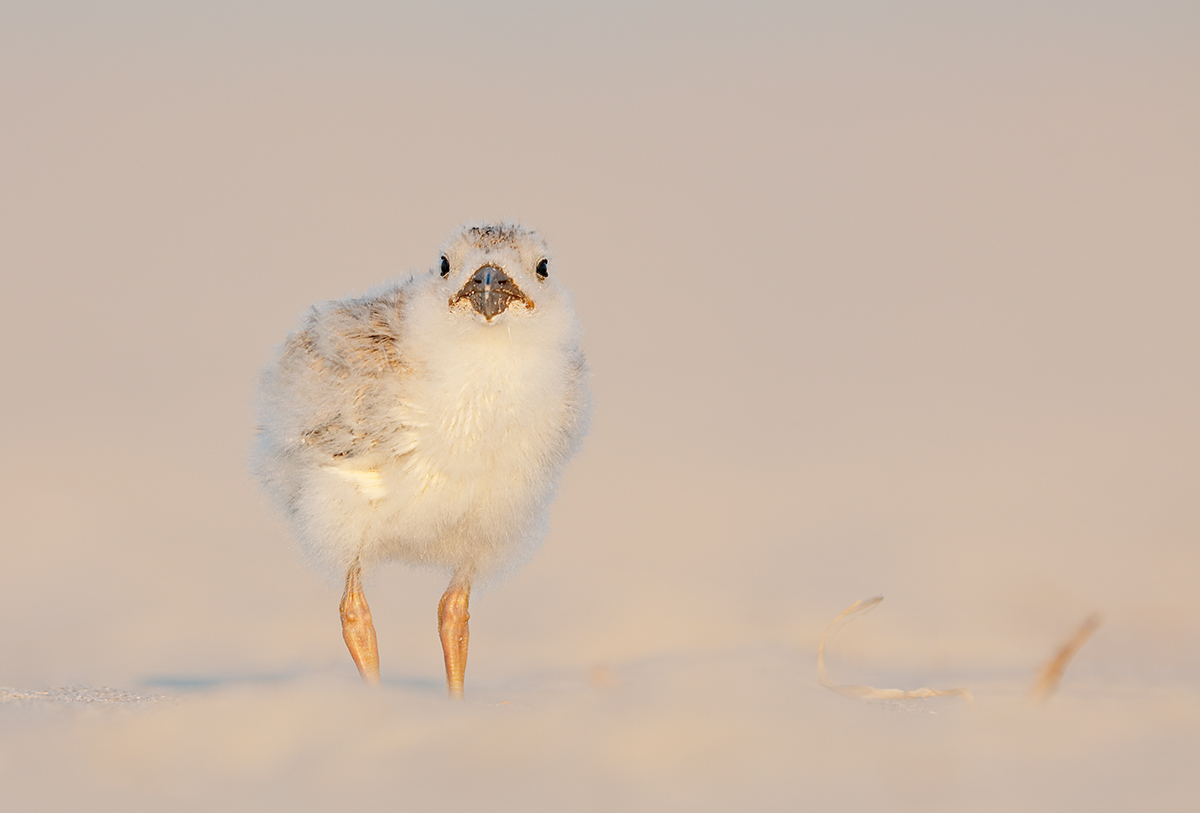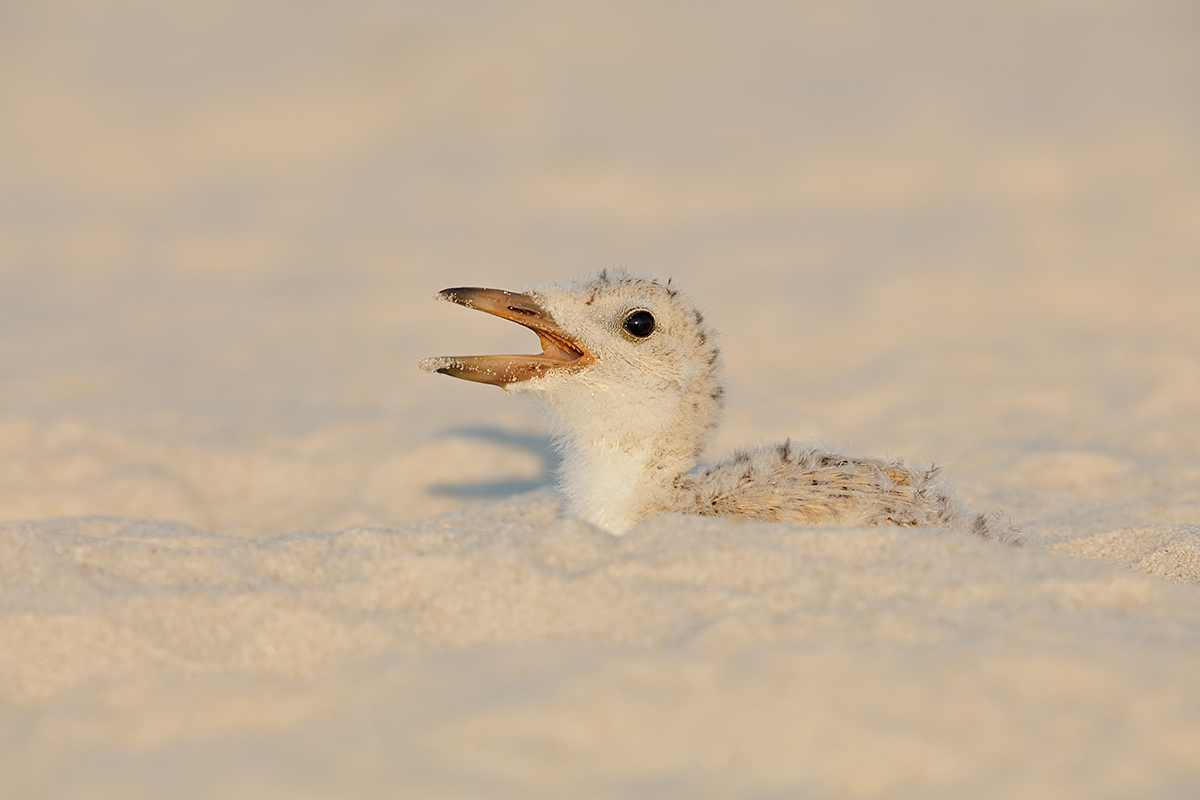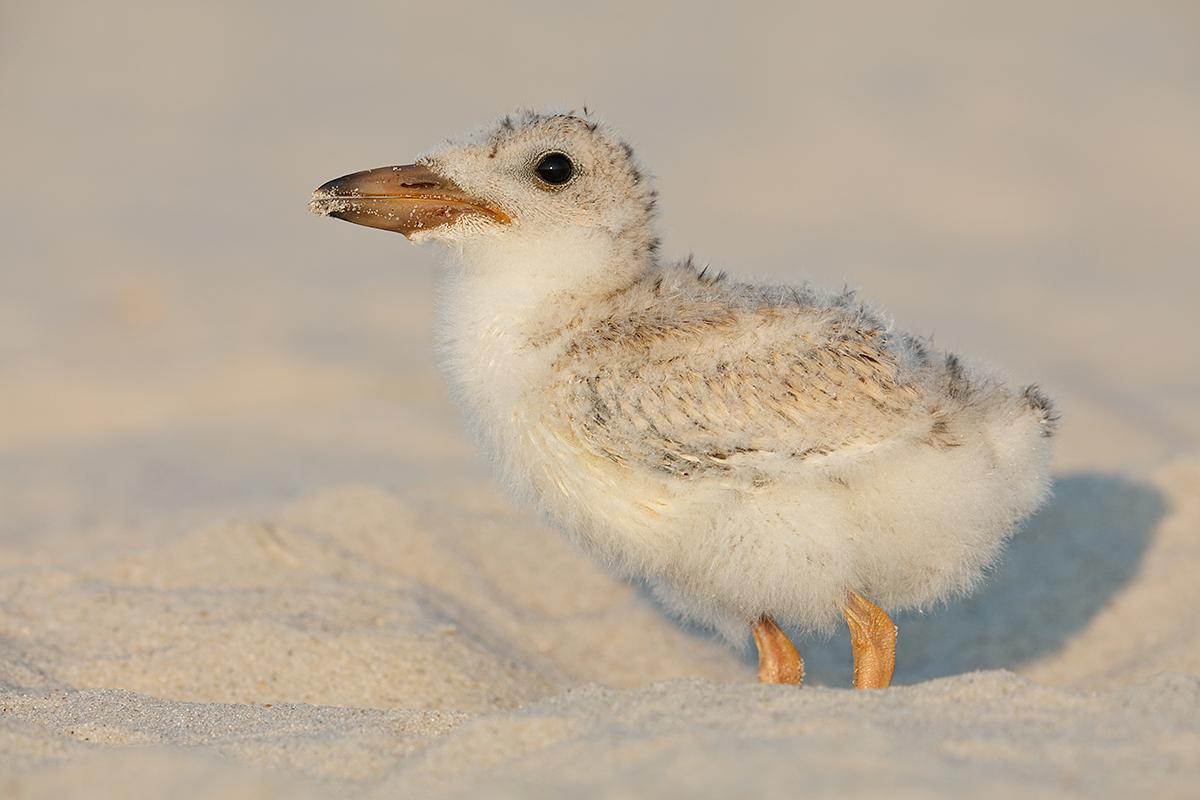What’s Up?
We suffered from wind against sun conditions again on Thursday morning but yours truly found the only stellar situation for miles and put the whole group on a Common Tern nest with two tiny chicks. Boy, did we have fun. Images and the whole story coming soon.
I almost blew the streak as I thought that I had scheduled Thursday’s blog post in advance, but had not. I published it at about 10:30am to keep the streak alive.
The Streak
Today’s blog post marks a totally insane, absurd, completely ridiculous, unfathomable, silly, incomprehensible, what’s wrong with this guy?, makes-no-sense, 254 days in a row with a new educational blog post. And I still have dozens of new topics to cover; there should be no end in sight until my big South America trip next fall. As always-–and folks have been doing a really great job recently–-please remember to use our B&H links for your major gear purchases. For best results use one of our many product-specific links; after clicking on one of those you can continue shopping with all subsequent purchases invisibly tracked to BAA. Your doing so is always greatly appreciated. Please remember: web orders only. AND Please remember also that if you are shopping for items that we carry in the new BAA Online Store (as noted in red at the close of this post below) we would appreciate your business.
Photoshop World 2016 Conference Specials
Be sure to check out the B&H Photoshop World 2016 Conference specials here.
|
This image was created early on the third morning of the Nickerson Beach IPT with the hand held Canon EF 600mm f/4L IS II USM lens, the Canon Extender EF 2X III, and the mega mega-pixel Canon EOS 5DS R. ISO 800. Evaluative metering +1 1/3 stops: 1/200 sec. at f/13. Daylight WB. Center AF point (by necessity)/AI Servo Expand/Rear Focus AF as originally framed was active at the moment of exposure (as is always best when hand holding). The active AF point fell on the center of the chick’s breast. Click here to see the latest version of the Rear Focus Tutorial. Click on the image to see a larger version. LensAlign/FocusTune micro-adjustment: -5. Image #1: Black Skimmer chick staring/6:21am |
An Early Morning to Remember/17 Good Minutes
Southwest winds are common on the Long Island beaches in mid-summer. On clear mornings, they present a big problem for bird photographers: wind against sun conditions with the birds flying, landing, and facing into the wind and away from you and the light. On Wednesday morning, July 20, my wonderful IPT group and I were blessed with a gentle east wind and clear skies.
Week old Black Skimmer chicks will often run off if approached carelessly. I instructed the group to move slowly and get low and within minutes everyone was well within range. Folks with shorter focal lengths capture some wonderful images of the chicks interacting with one of the parent birds.
Why Hand Hold at 1200mm?
I quickly realized that I could get a lot closer to the chicks without having to lug around my cumbersome tripod. I knew that by getting flat on the ground I might have a chance to create a few sharp images that featured the gorgeous low perspective that always adds intimacy to your images. In addition, it would be easier to maneuver left or right as needed to stay on sun angle should a chick relocate or should I wish to photograph a different bird.
Dangerous Shutter Speed
In the low light of very early morning I did not get many sharp images when working at 1/200 second even though the lens hood was resting firmly on the ground. Why? Some were soft due to the fact that I was elevating the camera body a bit with my right hand; the rig was not as stable as it would have been on a tripod. And some were soft due to motion blur caused by the subject (rather than the lens) moving.
|
This image was also created early on the third morning of the Nickerson Beach IPT with the hand held Canon EF 600mm f/4L IS II USM lens, the Canon Extender EF 2X III, and the mega mega-pixel Canon EOS 5DS R. ISO 800. Evaluative metering +1 stop: 1/500 sec. at f/11. Daylight WB. Center AF point (by necessity)/AI Servo Expand/Rear Focus AF as originally framed was active at the moment of exposure (as is always best when hand holding). The active AF point fell just below and behind the base of the chick’s open bill. Click here to see the latest version of the Rear Focus Tutorial. Click on the image to see a larger version. LensAlign/FocusTune micro-adjustment: -5. Image #2: Black Skimmer chick begging/6:35am |
Big Lens on the Ground Tips
To gain just a bit of elevation I built a small sand pile with my left hand. Then I rested the back of my left hand on the sand pile as it supported the lens. I had previously rotated the tripod collar so that the CR-X 5 Low Foot was on the bottom of the lens. This fave me an additional inch or so of elevation. As you can see by comparing Image #1 with Images #s 2 & 3 the 2 inches of extra height made a big difference in the look of the images. Why go for the extra height? To ensure getting over small mounds of sand that might be between you and the subject.
A Much Better Shutter Speed
As it got a bit brighter I dropped down from f/13 to f/11 and was able to get my shutter speed up to 1/500 sec. Even though I was still hand holding, my percentage of sharp images rose dramatically. Working at 1200mm while hand holding at 1/200 second is not an ideal situation.
|
This image too was created early on the third morning of the Nickerson Beach IPT with the hand held Canon EF 600mm f/4L IS II USM lens, the Canon Extender EF 2X III, and the mega mega-pixel Canon EOS 5DS R. ISO 800. Evaluative metering +1 stop: 1/500 sec. at f/11. Daylight WB. Center AF point (by necessity)/AI Servo Expand/Rear Focus AF as originally framed was active at the moment of exposure (as is always best when hand holding). The active AF point fell on the bend of the wing stub. Click here to see the latest version of the Rear Focus Tutorial. Click on the image to see a larger version. LensAlign/FocusTune micro-adjustment: -5. Image #3: Black Skimmer chick large in the frame/6:38am |
Your Favorite?
Which of today’s three featured images is your favorite? Be sure to let us know why you made your choice. Do you like the lower perspective in Image #1 or the slightly higher perspective in Images #s 2 & 3? Do you think that Image #3 is too large in the frame?
|
Tame birds and wildlife. Incredible diversity. You only live once… |
GALAPAGOS Photo Cruise of a Lifetime IPT/The Complete Galapagos Photographic Experience. August 8-22, 2017 on the boat. 13 FULL and two half-days of photography: $12,499. Limit: 13 photographers plus the leader: yours truly. Openings: 4.
Same great trip; no price increase!
This trip needs nine to run; in the unlikely event that it does not, all payments to BAA will be refunded in full.
My two-week Galapagos Photo-Cruises are without equal. The world’s best guide, a killer itinerary, a great boat (the Samba), and two great leaders with ten Galapagos cruises under their belts. Pre-trip and pre-landing location-specific gear advice. In-the-field photo instruction and guidance. Jeez, I almost forgot: fine dining at sea!
The great spots that we will visit include Tower Island (including Prince Phillips Steps and Darwin Bay), Hood Island (including Punta Suarez, the world’s only nesting site of Waved Albatross, and Gardner Bay)—each of the preceding are world class wildlife photography designations that rank right up there with Antarctica, Africa, and Midway. We will also visit Fernandina, Puerto Ayora for the tortoises, Puerto Egas—James Bay, and North Seymour for nesting Blue-footed Boobies in most years, South Plaza for Land Iguanas, Floreana for Greater Flamingoes, and Urbina Bay, all spectacular in their own right. We visit every great spot on a single trip. Plus tons more. And there will be lots of opportunities to snorkel on sunny mid-days for those like me who wish to partake.
It is extremely likely that we will visit the incredible Darwin Bay and the equally incredible Hood Island, world home of Waved Albatross twice on our voyage. The National Park Service takes its sweet time in approving such schedule changes.
We will be the first boat on each island in the morning and the last boat to leave each island every afternoon. If we are blessed with overcast skies, we will often spend 5-6 hours at the best sites. And as noted above, mid-day snorkeling is an option on most sunny days depending on location and conditions. On the 2015 trip most snorkeled with a mega-pod of dolphins. I eased off the zodiac to find hundreds of dolphins swimming just below me. Note: some of the walks are a bit difficult but can be made by anyone if half way decent shape. Great images are possible on all landings with either a hand held 70-200mm lens and a 1.4X teleconverter or an 80- or 100-400. I sometimes bring a longer lens ashore depending on the landing. In 2017 I will be bring the Canon 400mm IS DO II lens. In the past I have brought either the 300mm f/2.8L IS II or the 200-400mm f/4 L IS with Internal Extender.
|
Do consider joining me for this once in a lifetime trip to the Galapagos archipelago. There simply is no finer Galapagos photography trip. Learn why above. |
An Amazing Value…
Do know that there are one week Galapagos trips for $8500! Thus, our trip represents a tremendous value; why go all that way and miss half of the great photographic locations?
The Logistics
August 6, 2017: We arrive in Guayaquil, Ecuador a day early to ensure that we do not miss the boat in case of a travel delay.
August 7, 2017: There will be an introductory Galapagos Photography session and a hands on exposure session at our hotel.
August 8, 2017: We fly to the archipelago and board the Samba. Heck, on the 2015 trip some people made great images at the dock in Baltra while our luggage was being loaded!
August 22, 2017: We disembark late morning and fly back to Guayaquil midday; most will overnight there.
Most will fly home on the early morning of July 23 unless they are staying on or going elsewhere (or catching a red-eye flight on the evening of the 22nd).
$12,499 includes just about everything: all transfers, guide and park fees, all food on the boat, transfers and ground transportation, your flights to the archipelago, and three nights (double occupancy) in a top notch hotel in Guayaquil. If you are good to go, a non-refundable deposit of $5,000 per person is due immediately. The second payment of $4,000 is not due until 11/1/16. The final payment of $3449 per person will be due on 2/1/17. A $200 discount will be applied to each of the balances for couples or friends who register at the same time.
Purchasing travel insurance within 2 weeks of our cashing your deposit check is strongly recommended. On two fairly recent cruises a total of 5 folks were forced to cancel less than one week prior to the trip. My family and I use Travel Insurance Services and strongly recommend that you do the same.
Not included: your round trip airfare from your home to and from Guayaquil, beverages on the boat, phone calls, your meals in Guayaquil, personal items, and a $600/person cash tip for the crew and the guide—this works out to roughly $40/day to be shared by the 7 folks who will be waiting on us hand and foot every day for two weeks. The service is so wonderful that many folks choose to tip extra.
Please e-mail for the tentative itinerary or with questions. Please cut and paste “Galapagos 2017 Tentative Itinerary Please” into the Subject line.
Please Remember to use our Affiliate Links and to Visit the New BAA Online Store 🙂
To show your appreciation for my continuing efforts here, we ask, as always, that you get in the habit of using my B&H affiliate links on the right side of the blog for all of your photo and electronics purchases. Please check the availability of all photographic accessories in the New BIRDS AS ART Online Store, especially the Mongoose M3.6 tripod head, Wimberley lens plates, Delkin flash cards and accessories, and LensCoat stuff.
As always, we sell only what I have used, have tested, and can depend on. We will not sell you junk. We know what you need to make creating great images easy and fun. And we are always glad to answer your gear questions via e-mail.
I would of course appreciate your using our B&H affiliate links for all of your major gear, video, and electronic purchases. For the photographic stuff mentioned in the paragraph above we, and for everything else in the new store, we, meaning BAA, would of course greatly appreciate your business. Here is a huge thank you to the many who have been using our links on a regular basis and those who will be visiting the New BIRDS AS ART Online Store as well.
Be sure to like and follow BAA on Facebook by clicking on the logo link upper right. Tanks a stack!
Typos
In all blog posts and Bulletins, feel free to e-mail or to leave a comment regarding any typos or errors. Just be right 🙂



















why did you use a lower f stop as the sun became brighter. That seems counter intuitive
Thankyou Ray
No real rhyme nor reason. The first one should have been at f/9 for a faster shutter speed…
a
Hi, Artie. At your request, I came back to this blog. 🙂 Three fine images; my favorite is number 2, for the two reasons Jay gives and also because I just love the shadow of the bird’s open mouth. No, the chick in image three is not too large in the frame for me. My least favorite is image one. I have taken many photographs or birds head-on like that and I almost never seem to like them as much as ones where the head is turned a bit or even nearly 90 degrees to the side, with the big exception of raptors (including and perhaps especially owls) and a few of gulls. I’m not sure I can articulate a reason. Obviously, raptors with their eyes in front can make spectacular images looking right at the lens.
#1: I love the low angle, soft background, and body/head position. I might clone out that stick on the lower right, but it could actually be balancing the chick.
My favorite is image #1.
It’s not common to see such a straight on face-to-face image of a bird (except at the BAA blog!).
#2 is cute because it appears the chick is swimming in a sea of sand.
#3 is cute because you can see the entire adorable bird. It’s not too large in the frame.
But #1 steals the show – seeing the little puff ball on it’s wobbly looking legs with large grin-like bill and black eyes is just too precious. And you can see his little right wing, just barely.
Image 1…….
Why?
a
Hi Art,
My favorite is image #2. The frame is uncluttered and the distance to the chick in the frame feels comfortable. And what I really love is the feeling that the chick is being hatched out of the sand.
I like #2 best. I am puzzled, however….Why does the shadow on #3 appear to be coming from a different direction than 1 & 2? Did you move or am I not reading the light correctly. Thanks.
I do not stay in one spot for long 🙂
a
image one is my favourite.
The chick is soft and fluffy. I think it suits the subject to be slightly soft.
David.
I like 2 a lot (if we just could soften the shadow that pulls the eye), though 1 not bad either. 3 distracting due to shadow blob.
Question – did you have lens stabilization on or off? With the Canon II series of long lenses do we still switch off stabilization on tripod? Same question tripod with gimbal head on tripods? I have a 500mmII with gimbal on tripod and only recently read you should switch off lens stabilization on a tripod.
Do you have previous blogs on this?
Regards Johann
I love the shadow in #2. I leave IS on set to Mode 2 pretty much all the time, same as always.
a
Which of today’s three featured images is your favorite? Be sure to let us know why you made your choice. Do you like the lower perspective in Image #1 or the slightly higher perspective in Images #s 2 & 3? Do you think that Image #3 is too large in the frame?
Image 2 is my favorite. I like the perspective where it appears the bird is partially buried in the sand. Also, with the mouth open it conveys some action, as opposed to a static portrait. Image 1, I like less because the edges of the bird start to blend to much into the background. Some adjustments might correct that. I don’t think image 3 is too large in the frame. I like it.
Thanks Jay!
a